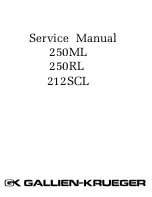Reviews:
No comments
Related manuals for Medusa4Z

250ML
Brand: Gallien-Krueger Pages: 19

CX-A5100
Brand: Yamaha Pages: 2

A-S701
Brand: Yamaha Pages: 35

A-S701
Brand: Yamaha Pages: 20

DSP-A3090
Brand: Yamaha Pages: 8

VMA1120
Brand: JBL Pages: 28

C1100C
Brand: McIntosh Pages: 2

TrueWave TW1750
Brand: Cal Power Pages: 84

NCA70.2
Brand: Hogtunes Pages: 12

49AMP240
Brand: Comelit Pages: 20

PM6010OSE
Brand: Marantz Pages: 10

PXIe-4610
Brand: National Instruments Pages: 10

EV 254
Brand: Lanzar Pages: 23

Contractor Precision CPS2.12
Brand: Electro-Voice Pages: 24

ALPIN 200
Brand: REIMESCH KOMMUNIKATIONSSYSTEME GMBH Pages: 16

Director D3200
Brand: AudioControl Pages: 42

GT0-504EZ
Brand: JBL Pages: 18

L4 EL34p
Brand: ANKits Pages: 56

















